







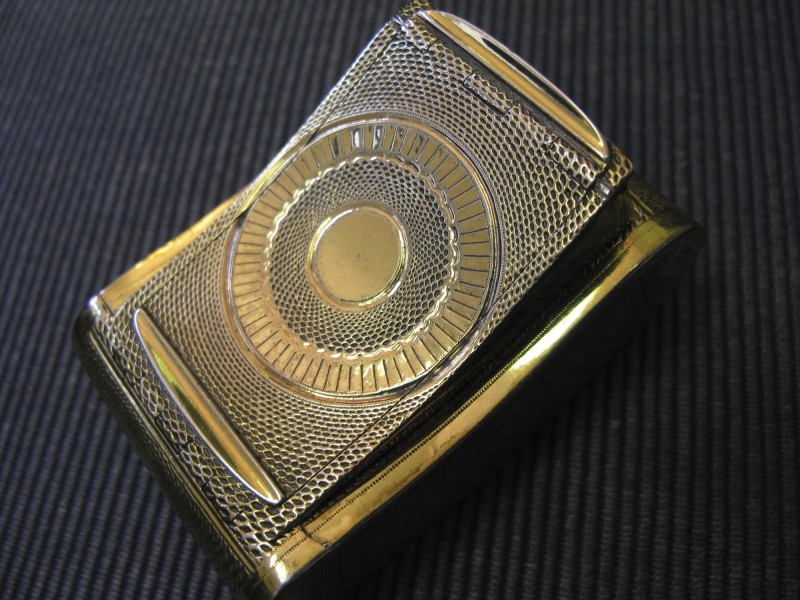








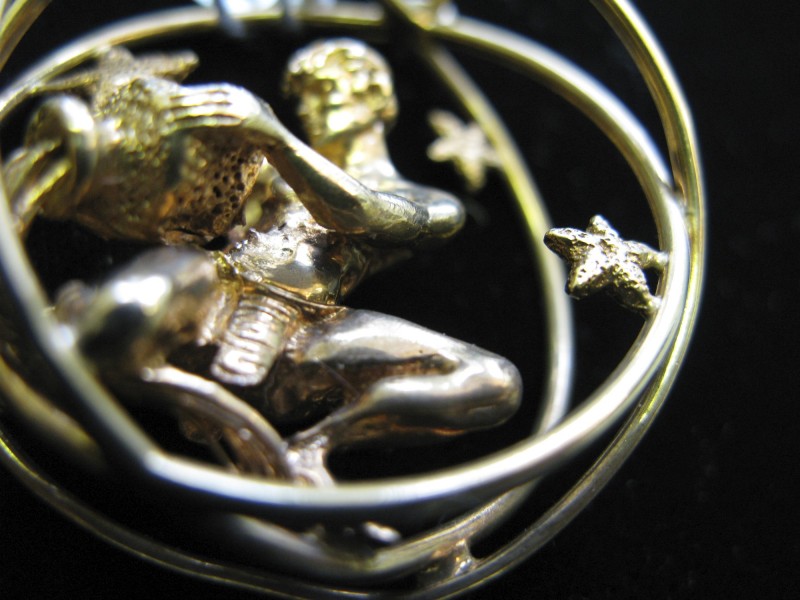








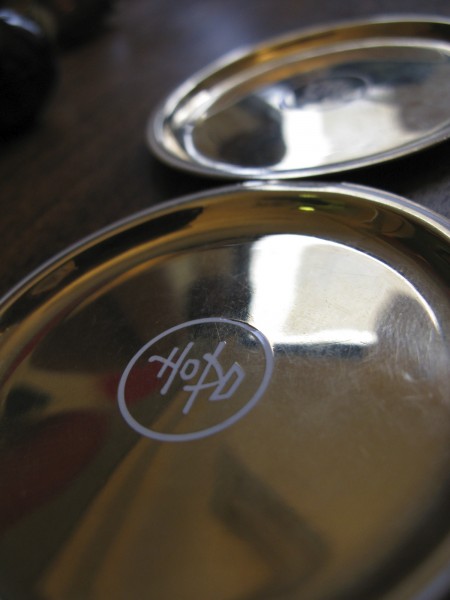












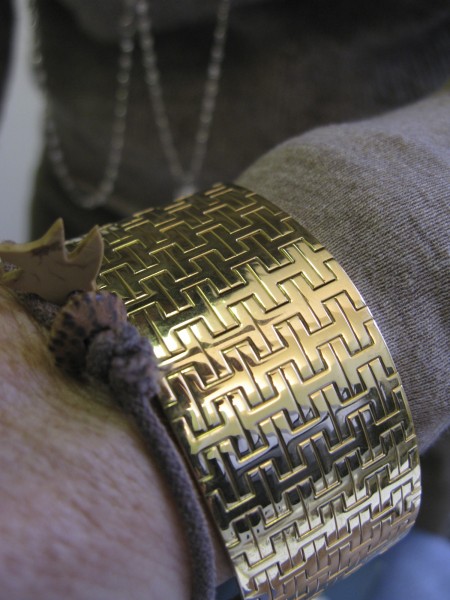
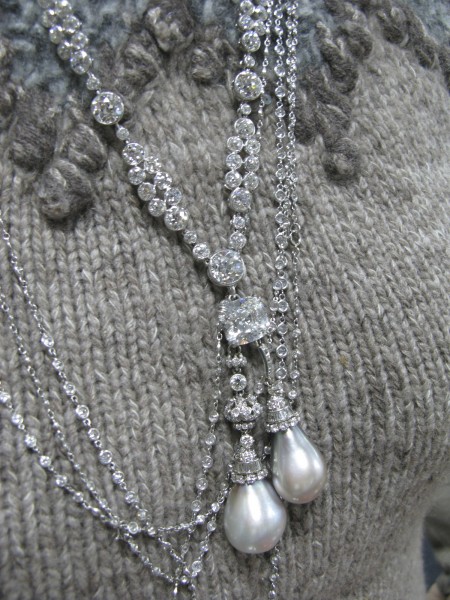








 “To shine inside and out is the secret of life. Keep shining.”
“To shine inside and out is the secret of life. Keep shining.”
Patrizia di Carrobio
I met Patrizia one evening at her wonderful Upper East Side apartment in Manhattan. She was hosting an evening for women, both long time friends and recent acquaintances. Sipping delicious champagne, we had the privilege of appreciating a romantic Tango performance over the sound of a tuned bandoneón. It was a celebration of life, togetherness and the Italian launch of Patrizia’s newest book, Diamanti, for the holiday season.
We had never met before. Perhaps we crossed paths occasionally in our teens in Brussels. Both our mothers – who still live in the city – were neighbors at the time at the prestigious “Square du Bois“, a 19th century building ensemble on the Avenue Louise just off “le Bois de la Cambre.”
Patrizia and I moved on with our lives, and years later we meet almost accidentally in New York City, as if by enchantment, because of one simple word on an e-mail: Diamonds. Both of us share the same passion for the intriguing, sparkling stones immortalized in a song performed by Marilyn Monroe in 1953 as “A Girl’s Best Friend.”
The reason I chose to accept Patrizia’s invitation, without recalling if knew her, was a simple teaser she included on an e-mail invitation that said: “Every day, diamonds are bought, sold, given, exchanged – stolen! – admired, worn, all over the world. To gain or to give a diamond is an important step that seals some fundamental moments of life: a promise of marriage, the arrival of a child, the confirmation of a connection of love, or also the personal satisfaction of gaining and possessing a stone for oneself.”
Yes! She definitely knows about diamonds. As my eyes quickly scan the words of the e-mail, I clearly feel I relate to her. I put on something nice, wear my South Sea pearl necklace and decide to head empty-handed to Patrizia’s party. After all, I would not know what to offer at this point. I will resolve this dilemma later.
The entrance hall is majestic. Contemporary art works enhanced by bright halogens reign supreme on the walls of the elegant, high-ceilinged Pre-War building. A large, festive Christmas tree and small colorful rose bouquets assembled in glass vases strategically positioned all around give a sense of freshness in the warm, welcoming atmosphere of the spacious living room. A few books placed in an orderly arrangement on a large coffee table near the chimney with titles such as Couples and Zen Flowers confirm the presence of harmony in the surrounding environment.
Patrizia greets each and every guest with attentive gestures. Although she uses her hands to express herself – a style perhaps inherited from her great, great grandfather Isacco Sacerdoti, Conte di Carrobio (personal banker of the Duke of Modena) – her noble bearing remains intact.
The evening turns out to be surprisingly pleasant. A small speech takes place including an allusion to Patrizia’s young two daughters Camilla and Francesca. I enjoy a deliciously aged Parmigiano Reggiano and interesting women I connect with on a third degree of separation, and finally I decide it’s time to leave.
On my way to the door, Patrizia kindly thanks me for my presence and recommends I take a small paper roll elegantly tied in a red satin ribbon. “I Promise Myself “. Curious, I walk quickly to my nearby street, eager to put my glasses on, change into something comfortable and read exactly what Patrizia, former young neighbor in Brussels, is promising herself.
In a cursive red font, she promises “To be so strong that nothing can disturb my peace of mind. To talk health, happiness and prosperity to every person I meet, to make all my friends feel that there is something worthwhile in them. To take a look at the sunny side of everything and make my optimism come true.” She also promises in her short manifesto to think of the best, to work only for the best and to expect only the best.
I pause and wonder if compelled, I should share these lines printed on the rich, almost sensually textured paper, to my virtual Facebook page or carry on reading while sipping a warm cup of tea, just because these thoughts look as appealing as the diamond teaser to me. I decide to keep reading first. Then we’ll see.
“To forget the mistakes of the past and press on to the greater achievements of the future…” That’s it! I know I can’t share this on Facebook. This is not my manifesto, it’s hers! I will call Patrizia next week and invite her to lunch. We will chit chat, finding certainly more to share. Moreover I would love to read at least one of her books and see how she spreads her wisdom to the universe.
We meet at Rouge Tomate on 60th and Fifth. I immediately notice under her coat sleeve a magnificent snake bracelet tightly encircling her wrist in an interesting gold mesh, whose head is adorned by several marquise-cut diamonds of different sizes: Certainly a Bulgari. I will inquire later, it’s too soon and we are not that close yet.
I learn over a fresh asparagus terrine that Patrizia has been lucky enough to maintain a good relationship with each of her two ex-husbands. As she writes in her book Diamonds – The First Steps to Eternity: “Both my marriages helped me grow; each separation that followed, alas, helped me grow even more.”
“Of course, I would never dream of recommending that someone face as painful an experience as a separation in order to “grow”, but I have always looked for the positive side of life. Today I can say that I am quite grateful to both my ex-husbands, and even to other men I have loved. Thanks to each of them, I have discovered parts of myself that I would never have managed to bring out, much less express.”
Her voice is peaceful, almost devotional to her values. I then ask her if she believes in God. “The concept of ‘trusting the universe’ was an astonishing discovery for me,” she answers with a smile to the pretty waitress passing by holding a tray of colorful fresh juices for the table next to ours.
“When I was a girl, I always thought I would have to attain everything with all my strength, and life was a struggle. I had to beat someone else to assert myself; I had to take on the world. On the job, I had been given a role of power when I was still rather young and the fear of making a mistake or not being taken seriously hardened me. In short, I attacked out of fear of being attacked.”
”Would you like another drink while you wait for your next course?” the pretty waitress asks in response to Patrizia’s smile. “No. Thank you,” I answer, almost annoyed with the interruption of our conversation. “…However,” – she pauses – “I suddenly started recognizing signs around me that I had been too blind to notice.”
“These signs helped me understand that I was part of a far bigger plan than me. Everything is arranged for the best by something or someone who is only interested in my well-being. Even what apparently seem to be little lulls are actually indispensable steps that lead me to greater self-awareness.”
“Of course, it is sometimes painful and tiring, but there is always a positive goal on the horizon to aim for. Little by little, I have learned to frame everything that happens to me in a vaster perspective. I have understood that often what seems like half a disaster right then and there actually contains something positive whose effects will be visible in time.”
We exchange mutual experiences about life, Kabbalah, ex husbands, and one’s mission in life when when I decide – more comfortable now – to confirm if her bracelet is indeed a Bulgari. Patrizia nods, appreciating my knowledge and our common passion for jewelry.
Learning about my father’s profession for the last half of a century as a diamond dealer from Antwerp to Belgian Congo mines in Africa, Patrizia is obviously proud to invite me to visit her office in the célèbre Diamond District. Thrilled with the invitation, I leave the restaurant with just one question: Can I bring my Cannon?
Here I am. The Diamond District is an area of New York City located on West 47th Street, between Fifth Avenue and Sixth Avenue in midtown Manhattan. The district was created when dealers moved north from an earlier district near Canal Street and the Bowery that was created in the 1920s, and from a second district located in the Financial District, near the intersection of Fulton and Nassau Streets, which started in 1931.
The move uptown started in 1941. The district grew in importance when the German Nazis invaded the Netherlands and Belgium, forcing thousands of Orthodox Jews in the diamond business to flee Antwerp and Amsterdam and settle in New York City. Most of them remained after World War II, and remain a dominant influence in the Diamond District.
The area is one of the primary centers of the global diamond industry (along with London – rough stones; Antwerp, Belgium – historical but waning; Mumbai, India – increasing in significance, Ramat Gan, Israel) as well as the premier center for jewelry shopping in the city. An estimated 90% of diamonds in the United States enter through New York.
It has been reported that total receipts for the value of a single day’s trade on the block average $400 million. There are 2,600 independent businesses located in the district, nearly all of them dealing in diamonds or jewelry. Most are located in booths at one of the 25 “exchanges” in the district.
After working more than 30 years in the diamond business, Patrizia writes about the District in her Diamond book: “Women are very few in number: The business is in the hands of men, the majority Orthodox Jews – many of whom are Chassidic.”
The Chassidics all of you have seen, at least in movies, with the beard and curly sideburns: Even in high summer season they wear wide brimmed black hats, long black coats and white shirts buttoned to the last button without a tie.
What all of you certainly have not seen, are the pockets made of fabric that they use under their coats fixed with a small shoulder belt. There, mugger-proof, they keep diamonds by the hundreds of thousands – if not millions – of dollars!
Many deals are finalized by a simple, traditional blessing (mazel und brucha) and handshake. The Diamond Dealers Club – also known as the DDC – an exclusive club that acts as a de facto diamond exchange, has its own synagogue. Retailers with shops line the streets outside. Above the bazaar is the Gemological Institute of America (GIA), which is recognized worldwide as an authority on certifying diamonds’ authenticity.
The boundary between the “inside” and “outside” of this “island” (so-called by Patrizia in her book) is practically nonexistent. Above the curious, small, million-dollar shops lay many offices where the same business takes place. The building where Patrizia’s office is located is a fine example of the best Art Deco has to offer.
Two doors open, one after the other at intervals for security. I recognize the ‘smell’ of my childhood; the “Do-not-touch-anything-around-it’s- dangerous”. The feeling is the same as when I used to hang around the heavy safe, whose secret lock combination only my dad knew, and the James Bond movies my black nanny watched when my family and I lived in Monrovia, close to the diamond mines.
Patrizia, wearing a gorgeous wool sweater, taupe corduroys and a tremendously chic set of very long necklaces in platinum and tiny diamonds, invites me to sit while I hear her try on the phone to have her assistant understand that it’s OK to feel frustrated when things don’t go your way. While she speaks she points at an open safe at the corner of the room where I am supposed to feel completely at home and browse through everything I find interesting.
Quite shy, I approach what later I would describe as the most interesting Ali Baba treasure cave I have seen. The conversation with her assistant, a few clients and suppliers treated with the same kindness but less indulgence lasted – luckily for me – for more than one hour.
I discover – ecstatic through the viewer of my camera lens – hundreds of splendid museum pieces, small collectibles, objets de vertu, unusual vintage pins, brooches, multicolored rings and earrings, especially when signed by masters such as Cartier, Tiffany, Van Cleef, Bulgari and Jar.
Most of them are part of Patrizia’s personal collection sourced throughout the years during her successful career as one of the first female auctioneers at Christie’s in London and New York. Several are for sale. Many were inherited from her great grandfather Vittorio Sacerdoti, who actually began the construction of the family Castello Carrobio,
Patrizia is finally done with her phone calls. The granddaughter of Contessa Gabriella Nicolis di Robilant, known at the time to consult with wealthy Americans in Paris on Fashion and Lifestyle choices during their trips while she was sharing an apartment with fashion legend Elsa Schiapparelli, passionately moves around the room. She seems almost fearful of forgetting something that could catch my attention and further surprise me. Having generated a record-setting 30,000,000 dollar sale for Christie’s North American jewelry department in 1989 seems to be not enough. She demures, “Pure luck, I guess.”
Constantly bringing to light newer treasures, one after the other, for my photo creations, she continuously asks in Italian: “E questo non lo vuoi?” (What about this one, don’t you want it?) I watch her meticulously organize tiny 19th century pill boxes and perfume bottles on a black velvet tray with the only light available, the light of a snowy day outside the window to 42nd Street.
I can’t help remembering what she writes in her book: “People imagine that since I work in the world of jewelry, I have scads of my own jewelry that I keep in order and carefully rotate. I do believe that I have more than most women, and though I tell everyone to take good care of their jewelry, I am not the least bit tidy when it comes to my own.”
“As they say, I do not practice what I preach, at all! I confess that I sometimes get a scare because I am convinced that I have lost a piece of jewelry. I have developed a technique for these situations: I take a deep breath, I tell myself it is only the fault of my disorganization, and I start to look more calmly and I usually find it.”
“Mainly though, I get these short-term, absolute crushes: I wear the same piece of jewelry for a month and then never again, exactly as I do with bags. It is not unusual to see me with the same purse for weeks and weeks, irrelevant of the outfit or shoes I might be wearing.”
While she talks about her past, more and more objects come out of that safe, leaving me speechless. Patrizia writes in one of her books that she chose her business when she was twenty-three based “…on an entirely irrational impulse, although more sophisticated mechanisms were probably at work at a deeper level of consciousness.”
“At any rate, my temperament made it hard for me to admit even just to myself, that I let myself be guided by instinct alone, so I created a very logical motivation a posteriori. I had already lived in five different cities by age twenty-three: Montréal, Lausanne, Milan, Brussels, and Rome. This mobility was not unusual for an American, but rather odd for a European.”
“My boyfriend’s job seemed to indicate that I would continue to travel from one country to another. So if I wanted a job, I would have to find one that I could do just about anywhere. I was convinced that jewelry was perfect for this. I would quickly discover that this was not true, and you had start from scratch in each new city. Fortunately at that point, it was too late.”
“In addition, the idea of handling magnificent colors and exquisitely wrought objects rewarded my aesthetic sense. It was only many years later that I discovered my grandmother had had a great passion for jewelry.”
Suddenly I see a red blinking light in my camera screen. “I can’t believe this is happening!” I tell Patrizia, who does not understand what is going on. The battery, yes the battery is off, discharged and I only brought one with me…I had no idea this would take me so long! I guess I will have to leave…
“Leave?” says Patrizia, “But you have seen absolutely nothing yet! Elliot is waiting for us to show you where and how the most interesting part of my work takes place, Joelle! You cannot possibly go, the best is yet to be seen, trust me!”
I look at a 1950 gold flower brooch with a central ruby motif and reflect for a moment. I look outside the large window pane, the raging snow storm challenges me to make the appropriate decision. There are plenty of taxis but traffic is terribly slow due to the large amount of accumulated snow in the street. We have been here two hours. I am sure she is kidding me.
I ask: “What do you mean Patrizia? I have a lot of material in my camera already. Thank you, it was really a pleasure. It will take me a long time to edit all the pictures. Moreover, how can you say the best is not seen yet? Do you mean you work with something different than what I have seen?”
Patrizia answers, “Get yourself a taxi and come back. My partner’s office is waiting for us. Bring everything you need this time.” Without a word, in a taxi now, I read a chapter of her book Diamond – First Steps to Eternity:
“I knew I had to study and prepare myself, learn as much as possible about precious stones, and get at least a smattering of accounting and administration. I had clamorously underestimated the “human factor” – the pleasure of establishing an emotional contact with customers. Emotions, sentiments, expectations and so forth all just poured out when purchasing jewelry.”
My assistant is waiting downstairs wearing slippers and my coat with two charged extra batteries for my camera. While I hear the Afghani taxi driver complaining, not sure about what, I carry on with my reading as if I have never left Patrizia’s office for even a second:
“When my career took off and I got my first recognition, my attitude did not change. I never took myself too seriously and even less so when I felt I had arrived. I continued to do the best I could and nothing more. Most of the time I felt like I was playing a game, a game where I was very happy if I won, but not a whole lot more.”
“Working by choice and not out of necessity doubtless had its influence. I certainly did not feel going to the office every morning was a constraint. Today I am more at peace with myself and I realize that winning is not always indispensable, although my curiosity, desire, and enjoyment are the same as thirty years back. This is why I am always a little sorry for people who consider the end of the workday as a goal to reach so they can finally be happy and have time to dedicate themselves to what they really love.”
“This is the point: jewelry and precious stones are indeed my work, but they are mainly my favorite hobby. Ideally, I could continue to dedicate myself to them until the end of my days. Yes, I could finally wake up later in the morning and have some more vacation, but I really have a hard time imagining not having my office in the Diamond District at all, or customers to attend to. Mainly, I expect not to lose my capacity for enthusiasm over ever-new challenges and projects, even ones that I cannot even imagine at this moment.”
Patrizia and I meet at her partner’s office, which happens to belong to her second ex-husband. I don’t recall if there are two or three doors this time, but I know for a fact that Patrizia is totally at home in this place. A large picture of her two daughters sits on a window close to a desk full of old vintage jeweler’s boxes.
She chats with a man with a loupe in his hand, says hello to another talking on the phone, talks in codes with a third about a client, and gossips a little with all about the week’s latest events in the social and professional marketplace. She introduces me to the group of busy people as a friend who will ‘talk ‘ about her. She then quickly asks to be shown, looking at me, the “Pieces de Resistance” of the house. In the meantime, I try on several diverse and important 1920’s, 40’s and 50’s European and American Jewelry. I learn that this is the place where future brides, mums, and devoted husbands come to seek advice for gifts they would like to offer to their beloved.
Patrizia explains that before her book Diamonds: The First Steps to Forever, she had initially thought to write a guide for people who needed to chose engagement rings. Due to her vast life experience dealing with human emotions, sometimes restrictive financial budgets, and important cultural values associated with a commitment, she felt compelled to be at service to those who very simply could do with an extra guidance. “The Diamond Coach” perhaps?
Patrizia wants to make sure that all clients are treated equally when they step into her office. Her challenge is to find what best suits each and every one. If it’s 500 or 5,000,000 dollar beauty, what really counts in Patrizia’s heart is the luxury of making someone happy. In one of our last conversations she elaborates further:
“One of my life purposes is to bring “beauty” to people’s lives, by making them feel attractive, helping them to see artistry around themselves, from a brin d’herbe dans du ciment, to a beautiful sunset, to a smell that we suddenly encounter, all the above being priceless, with no price and no cost, except our commitment to see. The smell of a soap or the flicker of a candle bring beauty into your life.”
In her book she writes, “I realized that diamonds have always been more than just an ornament in my experience, no matter how precious and laden they are with symbolic value, viz. “A diamond is forever.”
“Diamonds have been an extraordinary tool for me to get to know people, and the reality surrounding me in general. I will not pretend that I have become wise selling diamonds, but I am certain that selling diamonds has let me amass considerable stores of experience that I like to define “human” in the amplest sense of the term. I believe the result would not be much different if I sold precious stones in Rome or Tokyo as opposed to New York. The intimate essence (desires and fears) of people, be they rich or poor and despite their habits, is basically always the same.
“This book was originally conceived for anyone interested in engagement rings but I believe it may provide a starting point for reflection, and entertainment too I hope, even for people who are curious about the facets of the human soul as opposed to those on precious stones. This is why I am going to begin by confessing something you will find incredible: despite two husbands and an unbridled passion for jewelry and precious stones, I have never received a single engagement ring. Funny, isn’t it?”
A closed white leather box is presented theatrically in front of me on a dark blue fabric tray. Under the tray, diamond rings of all sizes, shapes, cuts and color seem to be the contestants in a grand competition where the most beautiful will win. The top of the box says Cartier in gold. Shaking, I slowly open the small box, to find almost touching my nose, the largest Colombian emerald ring I have ever seen in my life. A pure Cabochon mounted on platinum.
I look perplexed to Patrizia, who is smiling at me. She is wearing now what you see in the pictures below. I must quickly send this post to my dad and hear the beautiful sound of his analytical words. I can already hear him say “Hmmm… pure, VVS1 all aligned very small difference between one round stone and the other.. Baguette, same! Very rare. Joelle cherie, very rare. Bravo! Where did you find this treasure?
“Dad,” I answer with a smile, “I once met a contessa at the “Square du Bois” …Remember?”
Joelle’s Picks:
The Jewel consultant: Patrizia di Carrobio
For personal consultations with Patrizia, email: patrizia@patriziadicarrobio.com
The Book: Diamonds: The First Steps to Forever to be released soon in the US
The photo credits:
Prostrated person on the steps: Micol Sabbadini
Chassidics: SKA Films/Snatch
Family: courtesy Orietta Carrobio
Patrizia’s Portraits: Pucci Scafidi
